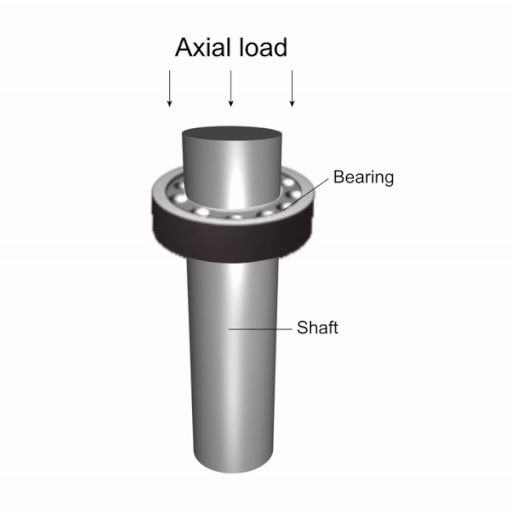Indicators on Volution Bearing You Should Know
Table of ContentsAll About Volution BearingThe Facts About Volution Bearing RevealedGetting My Volution Bearing To WorkHow Volution Bearing can Save You Time, Stress, and Money.
An axial (or drive) bearing load is when pressure is identical to the axis of the shaft. A radial bearing lots is when pressure is perpendicular to the shaft.Below is a quick referral for the sort of bearing lots and the very best round bearing for the task: Radial (vertical to the shaft) and light loads: Select radial ball bearings (additionally referred to as deep groove sphere bearings). Radial bearings are some of one of the most common kinds of bearings on the market.
Roller bearings are developed with cylindrical rollers that can disperse loads over a larger surface area than ball bearings. Below is a quick recommendation for the kind of bearing tons and the ideal roller bearing for the work: Radial (vertical to the shaft) loads: Pick conventional round roller bearings Axial (thrust) (parallel to the shaft) tons: Pick cylindrical thrust bearings Incorporated, both radial and axial, loads: Choose a taper roller bearing The rotational speed of your application is the next variable to look at when selecting a bearing.
They do better at higher rates and supply a greater speed variety than roller bearings. One factor is that the call in between the rolling aspect and the raceways in a round bearing is a factor as opposed to a line of contact, like in roller bearings. Since rolling components press right into the raceway as they roll over the surface area, there is much less surface deformation occurring in the factor tons from round bearings.
The 25-Second Trick For Volution Bearing

If this occurs, a basic and common remedy is to change the sphere bearing product from steel to ceramic. This keeps the bearing size the same but provides approximately a 25% higher rate ranking. Since ceramic material is lighter than steel, ceramic balls generate much less centrifugal pressure for any type of provided speed.
One reason is that the balls are smaller sized and smaller spheres evaluate less and important link produce less centrifugal pressure when turning. Angular call bearings also have an integrated preload on the bearings which functions with centrifugal pressures to correctly roll the balls in the bearing. If you are designing a high-speed application, after that you'll desire a high-precision bearing, normally within the ABEC 7 precision class.
Volution Bearing Fundamentals Explained
Consequently, when the bearing is being utilized at broadband, the balls swiftly roll over the bearing raceway with much less reliability which can lead to a bearing failing. High precision bearings. manufacturer near me are manufactured with rigorous standards and have extremely little inconsistency from the specs when generated. High precision bearings are trusted for applications that go quick due to the fact that they guarantee great ball and raceway interaction.
Some applications, like reducing device spindles, will only permit a little variance to happen on its revolving parts. If you are engineering an application such as this, after that select a high accuracy bearing because it will create smaller sized system runouts due to the tight resistances the bearing was produced to. Birthing strength is the resistance to the pressure that creates the shaft to differ its axis and plays a key duty in lessening shaft runout.

When the angular get in touch with bearings are set up, the balanced out is removed which causes the balls to press right into the raceway without any kind of outdoors application force. This is called preloading and the procedure raises birthing rigidity even prior to the bearing sees any type of application forces.
Some Of Volution Bearing
Lubrication produces a film of oil in between the rolling component and the bearing raceway that aids protect against rubbing and getting too hot. The most typical kind of lubrication is oil, which contains an oil with a thickening agent. The thickening agent maintains the oil in location, so it will not leave the bearing.
After the rolling aspect passes by, the oil and thickening agent join back with each other. For high-speed applications, understanding the rate at which the oil and thickener can divide and rejoin is very important. This is called the application or bearing n * dm value. Prior to you pick an oil, you need to locate your applications ndm value.
Compare your ndm value to the grease's max speed value, situated on the datasheet. If your n * dm value is greater than the grease max rate value on the datasheet, then the grease won't have the ability to supply sufficient lubrication and premature failing will occur. One more lubrication option for high-speed applications are oil mist systems which blend oil with pressed air and afterwards infuse it into the bearing raceway at metered periods.